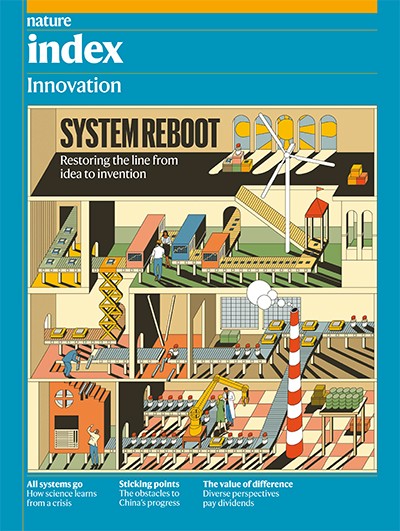A decade ago, I was working in Norway’s maritime industry as a communications adviser, and I noticed how diverse the workforce was, with a large number of highly skilled foreign-born workers. It became obvious how they could contribute to innovation in many ways, for example, through their unique position to boost their employers’ international presence by helping to secure contracts with businesses in their countries of origin.
Many studies have also described the benefits of a diverse workforce. The commonly painted picture is that a diverse workforce improves creativity, complex problem solving and innovation thanks to a collection of different views. Yet the foreign-born workers I have studied often feel excluded. I learnt when I was a communications adviser about the potential that diversity can offer, and the lost opportunities caused by work cultures that don’t recognize this. In the knowledge economy, success depends on bringing in diverse perspectives and making use of them.
It’s easy to see how diversity is connected to innovation. After all, innovation is a social process whereby a problem is solved in a new and creative way, and it often happens when different ways of thinking collide. Research has suggested, however, that although diversity does bring new perspectives and ideas, it’s not always plain sailing. It takes effort to create a culture in which people feel they will be taken seriously if they suggest a new way of doing things. If that doesn’t happen, it can lead to a less-than-harmonious workplace where people feel ostracized and pigeon-holed.
Nature Index 2022 Innovation
Public attitudes are equally important. In recent years this has become especially salient as discourse around diversity has shifted. In a 2022 paper, my co-author and I highlighted how anti-immigration stances have become more acceptable and more mainstream (S. M. Moss and M. C. W. Solheim Human Arenas 5, 488–508; 2022). There is a risk of such thinking seeping into the workplace. Firms can only gain a competitive advantage through increased diversity if they reject this premise and integrate the knowledge and expertise of their employees in meaningful ways. This needs to be an active process.
In a 2021 paper, researchers examined the willingness of white participants to follow the example of Black participants in solving a puzzle (S. S. Levine et al. Sci. Adv. 7, eabg9508; 2021). White participants often presumed that their Black peers were less competent and thus failed to learn from Black participants’ experience. The researchers then tested two exercises to try to change this. In the first intervention, white participants were told about the prior successes of Black participants in solving the puzzles. That did improve how the white participants rated the skills of their Black colleagues, but it still didn’t remove their hesitancy to follow the examples set by Black participants. The second intervention had more success. When white participants observed the accomplishments of Black participants first-hand, it made them more likely to follow their lead.
Managers need to do more than just highlight the good work done by minority groups in the workplace; they should do as much as they can to make sure other employees are also witnessing their successes. This isn’t yet the norm, minorities often report that their contributions are undervalued. All employees must also feel confident that their attempts to innovate will be well received; in other words, people from different backgrounds need to be sure they will be genuinely listened to if they suggest doing things a different way.
There is no automatic relationship between diversity and innovation. Companies must develop a culture that fosters a creative and constructive dynamic between groups. This involves challenging established practices. Consider, for example, the rugby team in England that started doing ballet to increase their posture and reduce injury rates. They understood the importance of challenging convention.
The potential of a diverse workforce can be nurtured by a work culture in which employees feel it’s not the end of the world to fail. This concept is often called ‘psychological safety’ and I came across a example when I met the manager of a dairy company in Norway. He spoke about how he wanted to launch a Coca Cola-flavoured milk on to the market. It failed, but afterwards his company launched a museum of failed innovations. In doing so, he created a culture in which failure is acknowledged and celebrated as a natural part of trying.
This article is part of Nature Index 2022 Innovation, an editorially independent supplement. Advertisers have no influence over the content.
Competing Interests
The author declares no competing interests.


